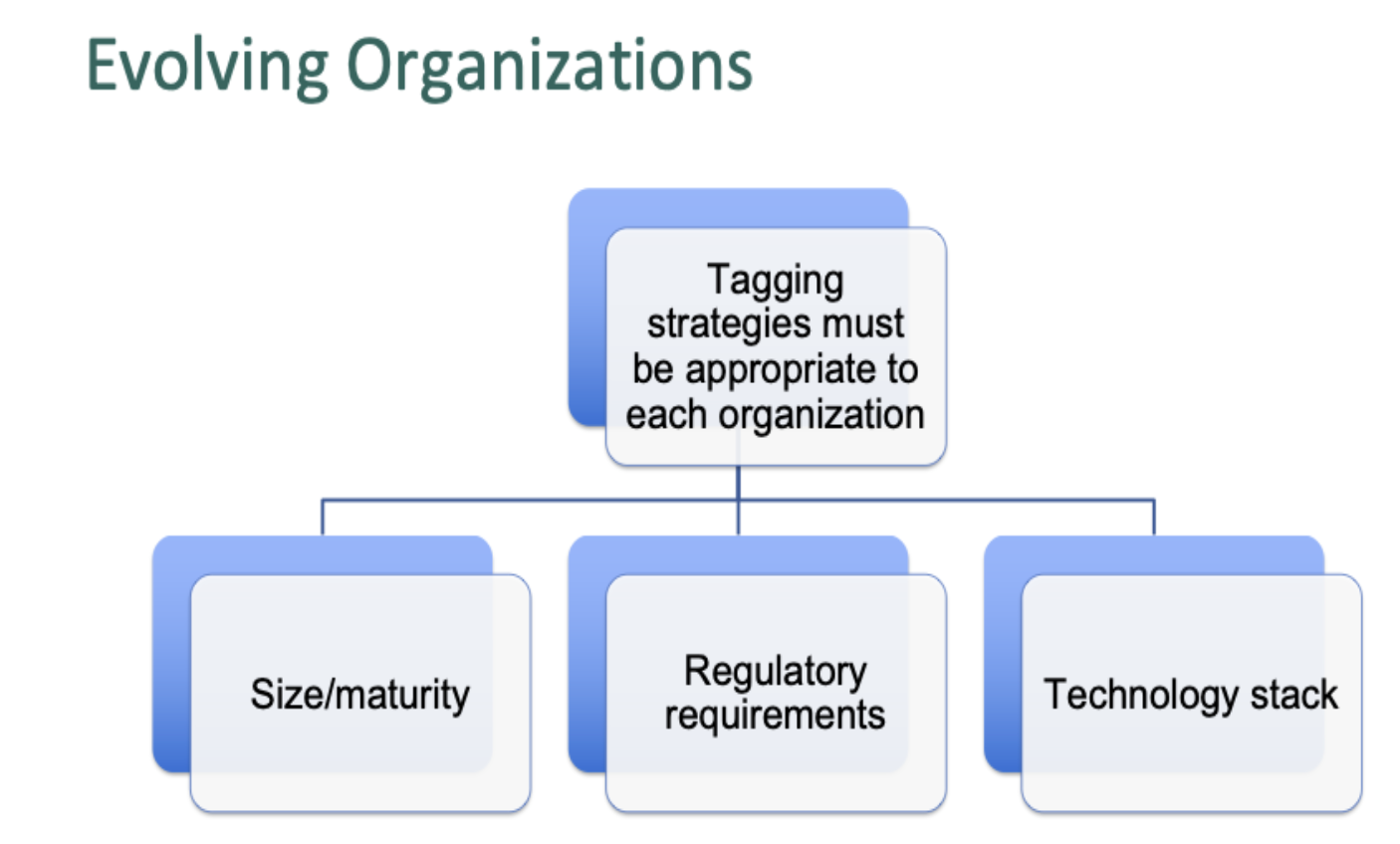Tag, You’re IT! Tagging Your Way to Cloud Security Excellence

To manage your cloud resources effectively and securely, you need to consistently tag assets across all your cloud platforms. Here we explain tagging’s main benefits, as well as proven strategies and best practices for tagging success.
The first step in securing a cloud environment is understanding where your assets are running. This can pose huge problems for security teams and business leaders, especially in large organizations where various application teams are using multiple services and providers. By tagging assets appropriately, you can identify ownership, implement effective controls and provide visibility into the organization, allowing technical staff and business leaders to make informed decisions, improve efficiency and effectively manage risk.
In this blog post we’ll explore these challenges and provide practical guidance for implementing successful tagging strategies that protect sensitive workloads and enable technical teams and business leaders to manage cloud risk effectively, which we covered in the on-demand webinar “Tag, You're IT! Best Practices for Optimizing Your Cloud Tagging Strategy.”
Understanding the tagging challenge
As we increase our reliance on public cloud providers like AWS, Azure and Google Cloud to host a wide array of resources, we reap numerous benefits, such as scalability and elasticity of infrastructure. However, we also must tackle new and unique challenges, one of which is the implementation of consistent asset tagging across a multitude of resources and platforms.
Tagging is a critical component of effective cloud resource management because it allows organizations to categorize infrastructure based on various parameters such as ownership, purpose or cost center. However, maintaining a consistent tagging strategy can be a painful task due to our vast and expanding number of cloud resources, human error, lack of effective enforcement and evolving organizational needs.
The implications of inconsistent tagging are far-reaching, including difficulties identifying resource ownership; inflated costs due to unidentified and therefore unused resources; and potential security risks from stale, unpatched workloads or misconfigured infrastructure.
Poor tagging has undoubtedly contributed to high-profile data breaches that result from misconfigured resources, such as AWS S3 storage buckets, that could have been discovered and remediated with proper cloud security controls in place. The first step to mitigating these risks is to ensure deep visibility and contextual awareness of our cloud infrastructure. Implementing robust and consistent tagging policies can help us achieve this goal.
The core challenges
Diversity of resources
Public cloud providers offer a vast array of services, each with its own unique set of features and tagging requirements. For instance, an Amazon EC2 instance might have different tagging capabilities compared to an Azure Blob storage instance or a Google Cloud Function. This diversity makes it challenging to implement a universal tagging strategy that works seamlessly across all resource types.
Human error
Tagging, when done manually, can result in inconsistencies and errors. This could be due to simple oversights, misunderstanding of tagging conventions or even typos. These inconsistencies can lead to mislabeled or unlabeled resources, making it difficult to manage and track these resources effectively.
Enforcement challenges
Without strict enforcement mechanisms, it's easy for teams to neglect tagging or use it inconsistently. This is especially true in large organizations where multiple teams or departments are using the same cloud account. Each team might have its own tagging conventions, leading to a lack of standardization across the organization.
Evolving organizational needs
As organizations grow and evolve, so do their tagging needs. What worked for a small startup might not work for a large enterprise with multiple departments and projects. Maintaining consistent tagging standards over time can be challenging, especially when dealing with legacy resources that were tagged according to outdated conventions.

Implications of inconsistent tagging
Inflated costs
A key benefit of tagging is the ability to track resource usage and associated costs. However, when resources are not consistently tagged, they can often go unnoticed and continue to generate costs when they are no longer needed.
Security risks
Unidentified resources can pose a significant security risk. If you don't know what a resource is for or who owns it, you can't be sure it's configured correctly or whether it’s exposing your organization to unnecessary risk. For example, an untagged storage bucket might be inadvertently left open to the public, leading to potential data leaks. Similarly, unidentified compute instances could be running outdated software, leaving them vulnerable to attacks.
Difficulty identifying resource ownership
“We don’t know what it does, so we don’t want to delete it in case it causes a serious problem.” This is all too often the sentiment of cloud teams trying to reconcile and organize the sheer amount of data in their cloud environments.
Without clearly defined ownership of cloud resources, it can be challenging to determine who should be notified in case of an incident or who should approve changes to a resource.
Inconsistent tagging can have far-reaching implications for your organization. However, these challenges can be addressed through strategic use of policy-as-code and automation. By understanding the implications of inconsistent tagging, you can better appreciate the value of a robust and consistent tagging strategy.
If security cannot identify and quantify the risk of removing non-compliant resources, insecure configurations go unnoticed and unattended, and leave organizations exposed to the risk of data breaches, reputational damage and compliance failure.
Policy-as-code: The core of a preventive cloud security program
Policy-as-code is the process of translating human language-based policies into code that can be run by a computer. A policy framework is based upon a specific programming language like YAML or Rego, is human readable, and makes it easier for non-developers to create and edit the code that implements policies.
Benefits of policy-as-code
The benefits of policy-as-code are numerous. It not only ensures consistency and reduces human error but also allows for scalability, repeatability, and transparency. With policy-as-code, you can easily scale your tagging strategy as your organization grows, repeat the same standards across different projects or teams, and provide transparency into your tagging policies. Compared to manually managing rules and procedures, policy-as-code offers several critical benefits. These include:
- Efficiency: When policies are defined as code, they can be shared and enforced automatically at scale. This is much more efficient than requiring engineers to apply policies manually each time resources are created or standards are changed. It’s also more efficient to update and share policies when the policies are defined in clear, concise code rather than when they’re described in human language that may be interpreted differently by separate teams.
- Speed: Automating policy enforcement lowers overhead costs for security teams by reducing the need for manual audits and enabling enforcement to scale.
- Collaboration: Writing policy in a standardized format allows multiple stakeholders to work from the same source code. That way, they can review the policies together to remove ambiguity and ensure consistency. Developers and business teams can use the same language to describe policy, which simplifies collaboration by making the policy easier to understand.
- Visibility: Using standardized policies facilitates visibility into the security posture of your cloud resources, so that multiple teams simply can look at which controls are in place. Security teams do not have to understand multiple controls defined in different languages or policies that are not written in a consistent way.
- Version control: If you keep track of different versions of your policy files as they change, policy-as-code ensures that you can revert to an earlier configuration easily in the event that a new policy version introduces issues in live systems.
- Automated testing: When policies are written in code, it’s easy to validate them before rollout by using automated tools, which lowers the risk of introducing critical errors into production environments.
Enforcing continuous compliance using automated tooling
Understanding continuous compliance
Continuous compliance involves regularly checking your cloud resources to ensure they comply with your tagging policies. This is achieved by running automated checks that flag or correct non-compliant resources.
Benefits of continuous compliance
Continuous compliance offers several benefits. It ensures that your resources are always in line with your tagging policies; helps identify and rectify non-compliance issues promptly; and provides ongoing visibility into your compliance status. This leads to improved resource management, cost control and security.
In summary, automated compliance allows us to:
- Maintain alignment between resources and policies
- Identify and rectify non-compliance quickly
- Maintain visibility of compliance status
Tagging strategies for cloud security success
Avoid complex policies
It’s expensive and time-consuming to design unique tagging policies from scratch. Plenty of tagging standards and templates exist already. Cloud application teams should use these tried and tested methods to ensure that they can quickly and easily implement and maintain compliance with their policies.
Use predefined tagging policies that are consistent across all cloud resources
Cloud security vendors should offer multiple predefined tagging policies that are standardized across multiple cloud resources and providers. As your organization grows or your requirements evolve, you can easily customize these policies or use a new standard that meets your organization’s needs.
Use runtime tooling to identify orphaned resources
Identify untagged resources using automated cloud security tooling. Advanced tooling can automatically discover untagged resources in your cloud environment and suggest appropriate tags based on metadata and permissions. Some tooling can even create pull requests, highlighting missing tags and suggesting code snippets for remediation. This allows you to create actionable tickets and quickly integrate these tasks into your development pipeline.
Use policy-as-code to automate tagging enforcement
The most common use of policy-as-code is to automate the enforcement of compliance policies. Start with enforcing tagging standards using pre-existing templates and policies to start you on your policy-as-code journey.
Action plan
- Start planning for tagging using existing standards and policy templates.
- Map out CI/CD pipeline, tools and integrations needed for policy-as-code security.
- Enforce your tagging policy on all new resources by using policy-as-code to scan infrastructure code for mistakes before assets are created.
- Identify and remediate untagged resources using automated tooling to locate all assets lacking appropriate ownership and configuration information.
- Conduct regular reviews of your tagging policy to ensure continued alignment with requirements and be open to updating your standards as your cloud infrastructure evolves.
To learn more about cloud-tagging best practices and policies, watch our on-demand webinar “Tag, You're IT! Best Practices for Optimizing Your Cloud Tagging Strategy” and visit our Tenable Cloud Security home page.
- Cloud
- Cloud



